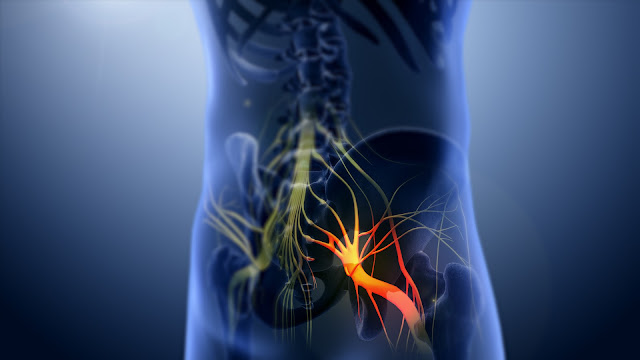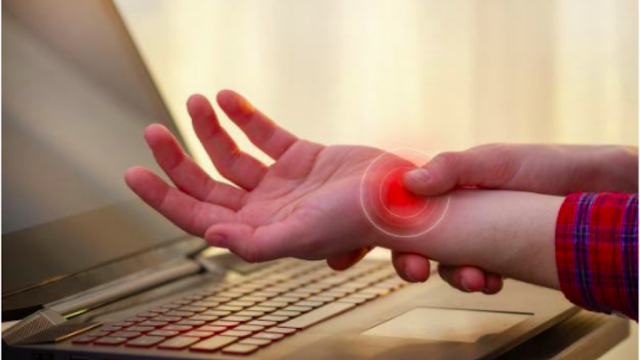Sciatica - Causes and Prevention
Image Source: Total Orthocare
Your sciatic nerve starts at your spinal cord, runs via your hips and buttocks, after which branches down every leg. The sciatic nerve is your body’s longest nerve and one of the maximum crucial ones. It has an instantaneous impact on your capacity to govern and sense your legs. When this nerve is irritated, you’ll revel in sciatica.
Sciatica is a sensation which can show up itself as a slight to intense ache on your back, buttocks, and legs. You may additionally sense weak spot or numbness in those areas. Sciatica is a symptom due to underlying harm on your sciatic nerve or a place that impacts the nerve, which includes your vertebrae, which can be the bones on your neck and back. As many as forty per cents of people get it in some unspecified time in the future all through their lives. It turns into extra common as you age. Sciatica is a totally different form of a symptom. If you’re experiencing ache that flows out of your decrease returned thru your buttock place and into your decrease limbs, it’s commonly sciatica.
Sciatica is the end result of harm or damage on your sciatic nerve, so different signs of nerve harm are commonly gifted with the ache. Other signs may also encompass the following:
- You may also have ache that receives worse with movement.
- You may also have numbness or weak spot to your legs or feet, that is commonly felt alongside your sciatic nerve pathway. In extreme cases, you can enjoy a lack of feeling or movement.
- You may also experience the sensation of pins and needles, which entails a painful tingling to your ft or feet.
- You may also enjoy incontinence, that is the incapability to govern your bladder or bowels. This is an unprecedented symptom of cauda equina syndrome (CES), that is defined below, and it calls for fast emergency attention.
Sciatica may be due to numerous situations that contain your backbone and might have an effect on the nerves running alongside your back. It also can be due to an injury, as an example from falling, or spinal or sciatic nerve tumours. Common conditions that can cause sciatica are described below.
Herniated disks:
Your vertebrae, or spinal bones, are separated through portions of cartilage. Cartilage is packed with a thick, clean material to make sure flexibility and cushioning even as you move around. Herniated disks arise when the primary layer of the cartilage rips.
The internal substance can compress your sciatic nerve, ensuing in lower limb pain and numbness. It’s expected that 1 to 5 per cent of people can have returned pain as a result of a slipped disk at some time in the future of their lives.
Spinal stenosis:
Spinal stenosis is likewise referred to as lumbar spinal stenosis. It’s characterised through the ordinary narrowing of your lower spinal canal. These narrowing places strain to your spinal cord and your sciatic nerve roots.
Spondylolisthesis:
Spondylolisthesis is one of the related conditions of degenerative disk disorder. When one spinal bone, or vertebra, extends ahead over another, the extended spinal bone can pinch nerves that make up your sciatic nerve.
Piriformis syndrome:
Piriformis syndrome is an unprecedented neuromuscular disorder wherein your piriformis muscle involuntarily contracts or tightens, inflicting sciatica. Your piriformis muscle is the muscle that connects the lower part of your backbone in your thighbones.
When it tightens, it may put a strain in your sciatic nerve, leading to sciatica. Piriformis syndrome can get worse in case you take a seat down for lengthy periods, fall, or experience a vehicle crash.
Seek immediate medical attention if you experience the following symptoms:
- Your pain comes after a severe injury or accident.
- You have sudden, excruciating pain in your lower back or leg that’s coupled with numbness or muscle weakness in that same leg.
- You’re unable to control your bladder or bowels, which are the symptoms of cauda equina syndrome.
The following steps can help you prevent sciatica or keep it from occurring again:
- Exercise often. Strengthening your back muscles and your stomach or core muscles is the key to maintaining a healthy back.
- Mind your posture. Make sure your chairs offer proper support for your back, place your feet on the floor while sitting, and use your armrests.
- Mind how you move. Lift heavy objects in the proper way, by bending at your knees and keeping your back straight.



Comments
Post a Comment